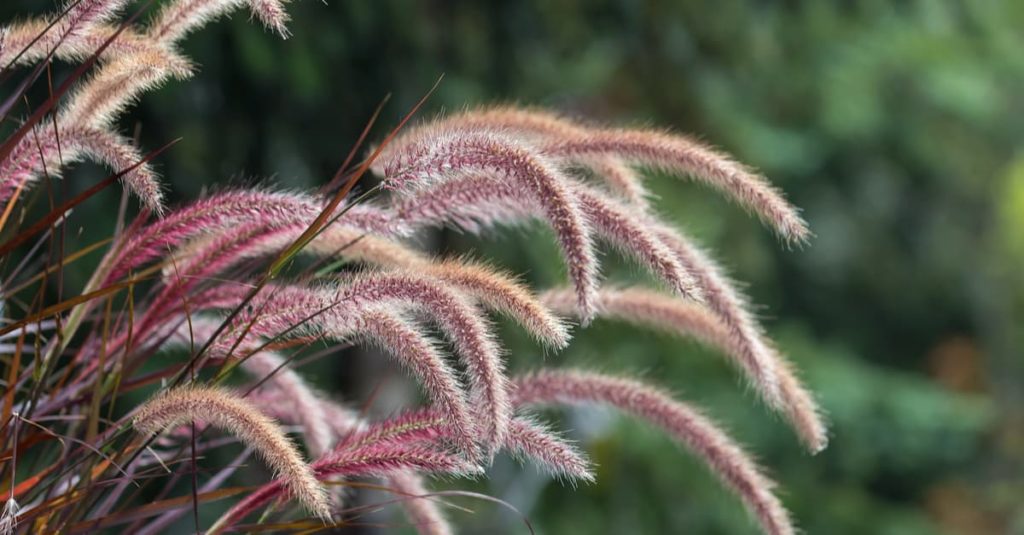
Summer in the garden is a magical experience. Aside from the extreme heat. And the wilting plants. And the excessive watering…
In all honesty, managing a summer garden in hot climates is not typically the picturesque experience we hope it to be. It’s hard work. Luckily, if you’re looking to get away from the work, there is a low-maintenance option that will leave you sitting in the shade, sipping cocktails and enjoying your curated landscape – grasses.
Ornamental grasses are the perfect addition to any kind of garden.
Do you need an edgy plant for your garden path, or something to spice up your rock garden? Or maybe you need fillers for your prized container garden, or something that creates height for a lightweight screen. No matter the need, there is an ornamental grass variety for you.
Not only do ornamental gardens look great, but they’re also easy to care for. Simply plant, then sit back, relax and enjoy the summer as it was meant to be enjoyed.
A Quick Care Guide to Ornamental Grasses
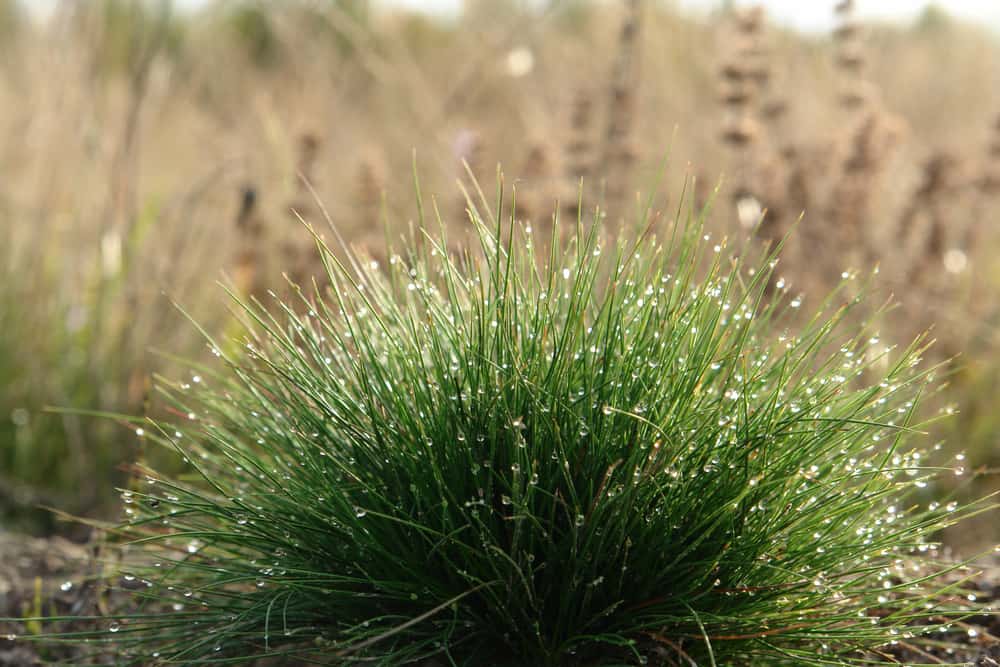
There are several varieties of ornamental grasses, all fit for different seasons and spots in your garden. Generally, ornamental grasses are quite low maintenance.
Depending on the variety and purpose of your ornamental grass, your watering habits may vary. Many grasses can withstand missing a watering or two, but will thrive with a thorough deep watering along with the other plants in your garden.
These grasses enjoy well-draining soil and don’t need to be fertilized often. If planted in good quality, balanced soil, they will thrive for long periods without any fertilizer. And, of course, your summer grasses need full sun to really shine.
You’ll need to cut back deciduous grasses annually, while evergreen grasses need to be tidied every so often as they get out of hand. For a full cut back, cut the stems down to a few inches above the ground. This will leave your deciduous grasses looking their best next season. Evergreens just need a quick trim here and there and a comb through to get rid of any dead, old leaves.
Now let’s get into the best ornamental grasses for your summer garden.
1. Blue Fescue
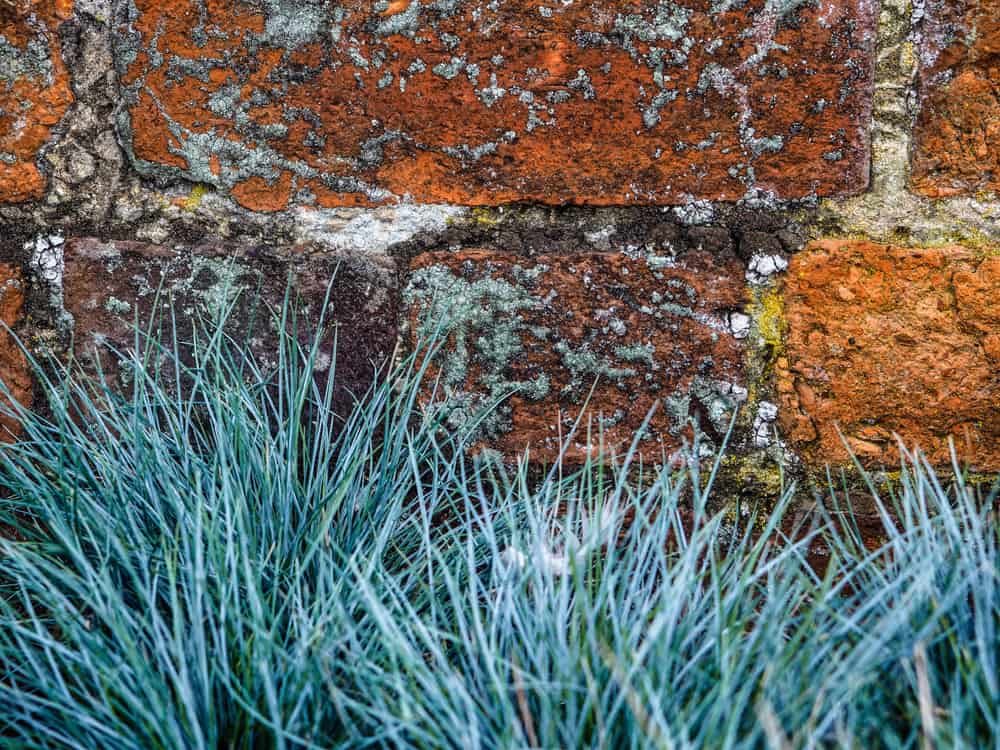
Blue Fescue is an ornamental grass with interesting color that grows fast and is easy to care for. It’s a clump-forming grass that will look great in containers, pots, or as a border plant.
Blue Fescue loves full sun to partial shade and can be planted with a variety of perennial plants. Its greenish-yellow flowers add an interesting texture when paired with large foliage too. As long as it has well-draining soil that does not stay waterlogged, this ornamental grass will thrive.
This grass is considered drought tolerant, but prolonged periods of dryness will stunt its growth. Blue fescue needs to be watered at least once a week in hot weather to keep it happy and healthy.
Blue fescue thrives in USDA hardiness zones of 4-8. It grows best in cooler summers but can tolerate hotter climates too.
2. Zebra Grass
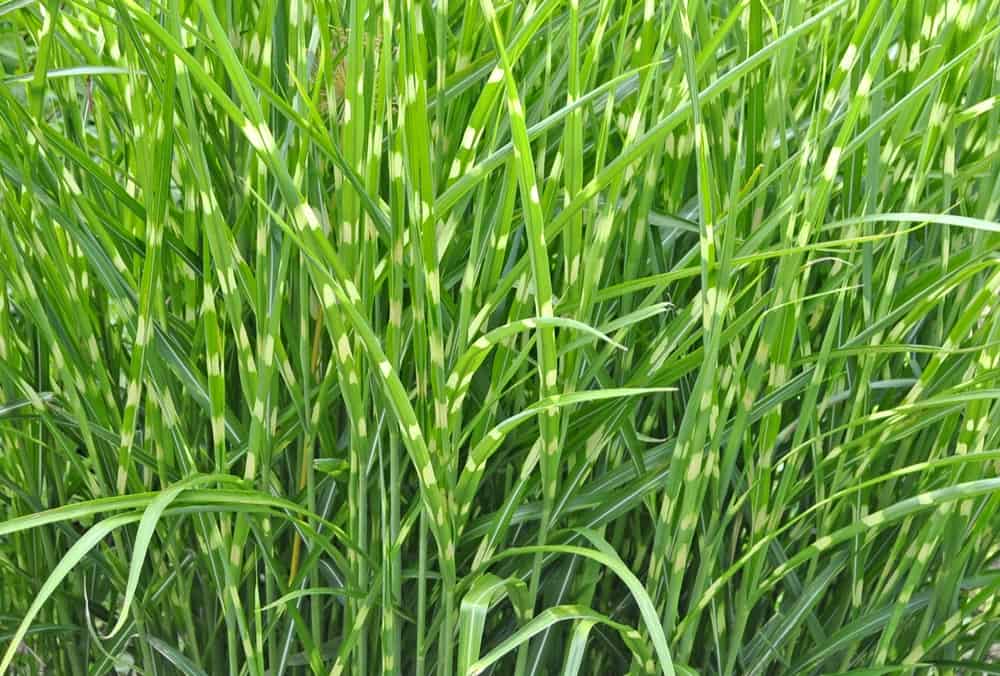
Zebra grass, or porcupine grass, gives an exotic look to any space. Its long, yellow, and green striped leaves contrast perfectly with larger leaves. Plant it with hedges to add some extra privacy and to break up the density of your hedges.
This ornamental grass is perfect for the low-maintenance gardener. It grows in a variety of soil types, from clay to loam to sandy – ideal for that tough spot in your garden you just don’t know what to do with.
Zebra grass loves the full sun, thriving in hot climates. It grows best in USDA zones 5-9, needing temperatures between 70 and 90 degrees to really shine.
Straight after planting, Zebra grass will need regular deep watering to allow the roots to establish. However, once it has settled in, you won’t need to water as often as this grass is also drought tolerant.
3. Mexican Feather Grass
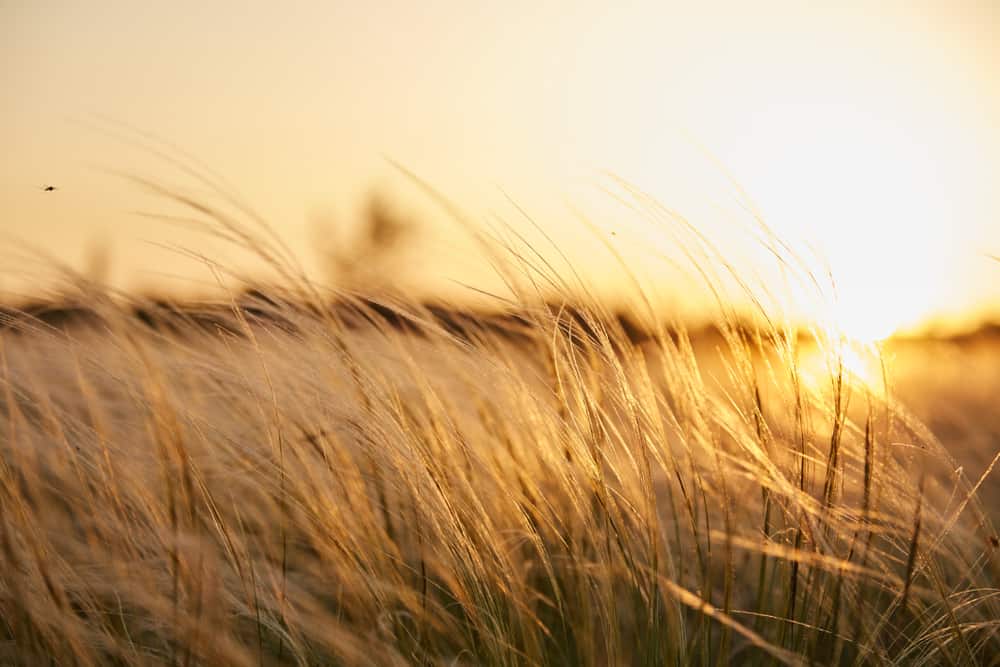
This ornamental grass is a favorite for many (including myself, just don’t tell my other plants). You’ll recognize this grass with its feather-like blades that soften landscapes. It grows in a variety of conditions and is drought tolerant once mature.
You can also grow Mexican feather grass almost anywhere. It’ll create height and interesting movement no matter where you plant it.
Mexican feather grass grows best in USDA zones 7-10, loving full sunlight and warmer conditions. It can lose its silvery hue in excessive heat, but the grass won’t die back. It needs loamy soil with good drainage.
This plant is ideal for forgetful waterers as it has low to average water needs. It’s incredibly drought-tolerant once established, and won’t look too damaged if you miss the occasional watering.
Mexican feather grass does have one major setback – this plant loves to spread. You’ll more than likely find an abundance of seeds all over your garden. It’s considered an invasive plant in some areas, but it can be controlled with regular maintenance.
Despite this setback, the beauty of this grass makes the effort worthwhile.
4. Japanese Forest Grass
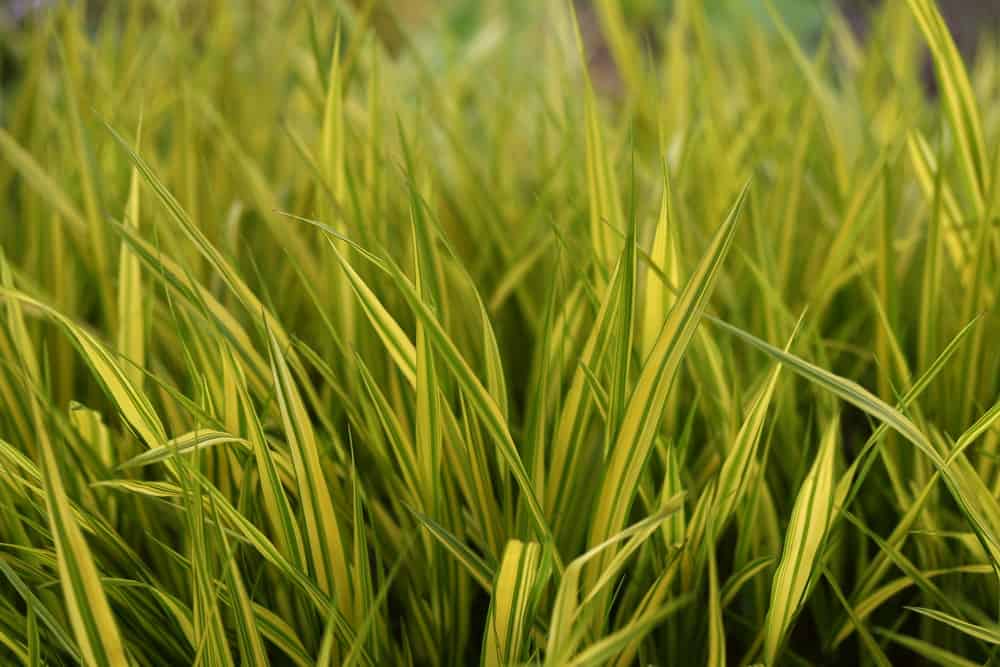
For a grass that creates a golden spectacle in containers or along borders, look no further than Japanese forest grass. Its leaves are golden with deep green stripes, creating a unique showcase no matter where it’s planted.
Unlike many other ornamental grasses, Japanese forest grass thrives in partial shade. It tolerates full shade or sun, but you won’t get the same vibrant hues. Excessive shade causes the leaves to become fully green, but too much sun causes browned tips to form.
Japanese forest grass grows best in hardiness zones 5-9, tolerating all conditions and temperatures these zones have to offer.
Another unique characteristic of this ornamental grass is that loves moist soil. It still requires well-draining soil that is full of nutrients, but it may need an extra watering or two, especially in the peak of summer. Apply mulch around the plant to help retain moisture.
There is only one downside to this stunning plant – it takes ages to grow. Not ideal for impatient gardeners, but certainly an option for those willing to wait for their rewards.
5. Purple Fountain Grass
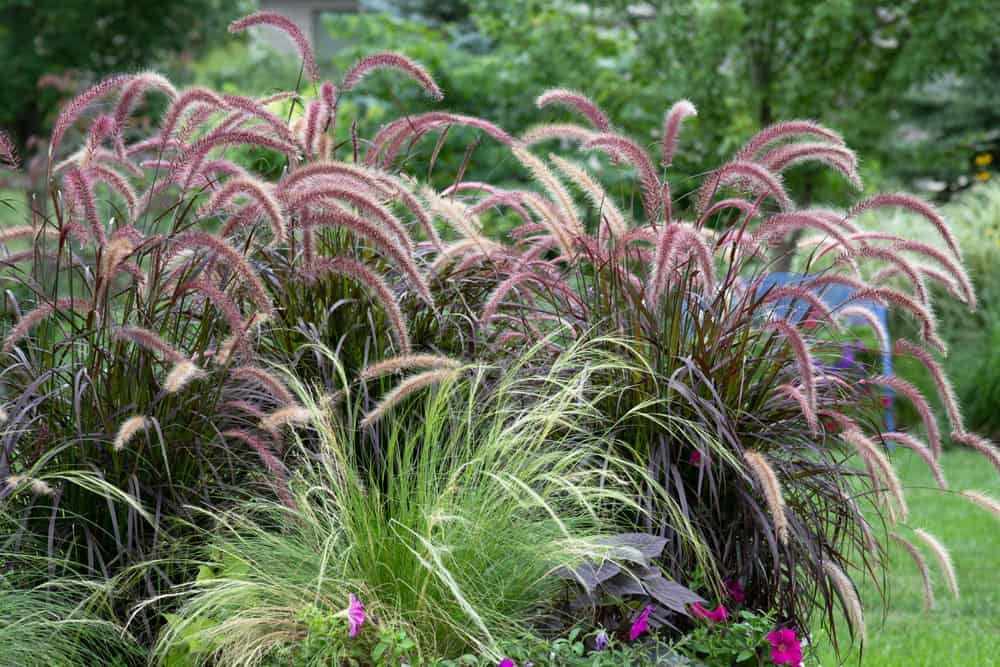
Purple fountain grass is popular among landscapers. Its purple-red fountain-like plumes add interesting texture to any space, from a distance and right up close.
It’s an ideal plant for a short privacy screen. It also looks great in container gardens, creating variety in texture and height.
This plant is incredibly easy to grow. Purple fountain grass grows best in USDA zones 8 to 11, but it tolerates a variety of temperatures. If you do live in cooler climates, you’ll be able to enjoy this grass as an annual. Even better, it is not fussy about humidity.
This ornamental grass is drought tolerant once it’s established, needing water about once a week if you don’t experience any rain. While it’s establishing in your garden, water twice a week to support the plant’s root growth, and slow your watering once it has settled.
The only thing that purple fountain grass is picky about is the amount of sunlight it receives. This plant thrives when given at least six hours of sunlight a day, perfect for sunny summer gardens.
6. Blue Oat Grass
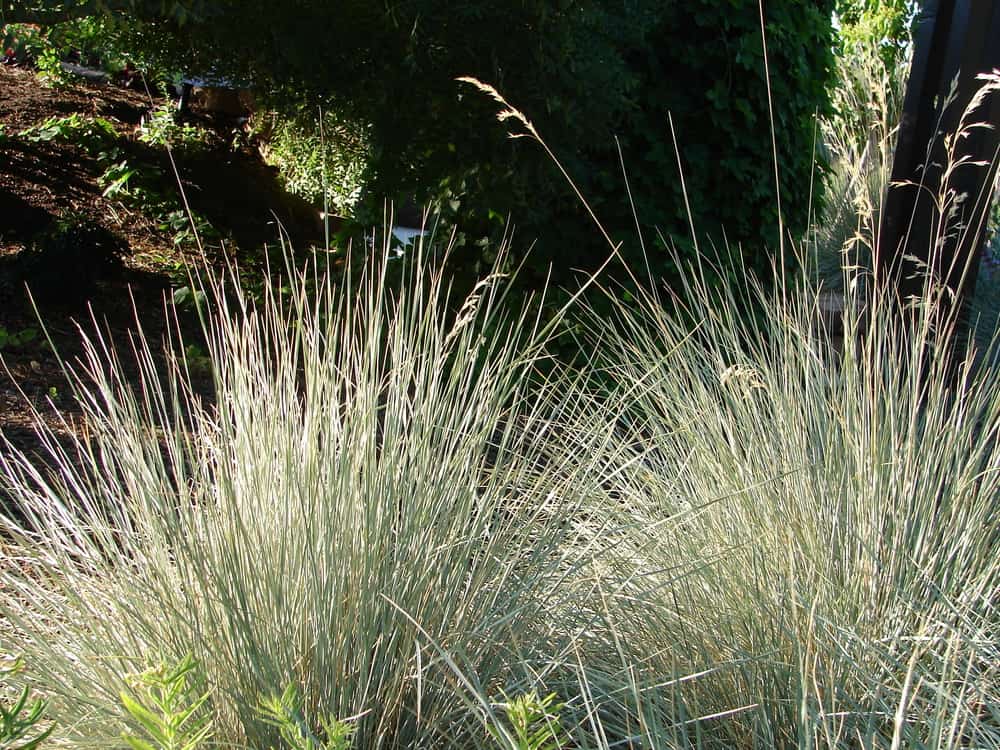
For areas with cooler summers, blue oat grass is the grass for you. It’s another fountain-like grass, but its distinct silver-blue leaves are a unique addition to any garden. Blue oat grass shines in rock gardens or as edging in large beds. Its interesting leaves are complimented by sweet blue flowers that bloom in summer.
Blue oat grass thrives in full sun, needing at least six hours of light per day. It prefers dryer and slightly cooler climates, growing best in USDA zones 4-9. But, it does tolerate warmer summer temperatures – it just may not grow to its full potential.
This ornamental grass needs dry and well-drained soil, so watering often isn’t necessary. It can even survive on rainwater alone in some areas. Monitor the soil often, keep an eye on the health of the plant, and only water when absolutely necessary.
7. Japanese Blood Grass
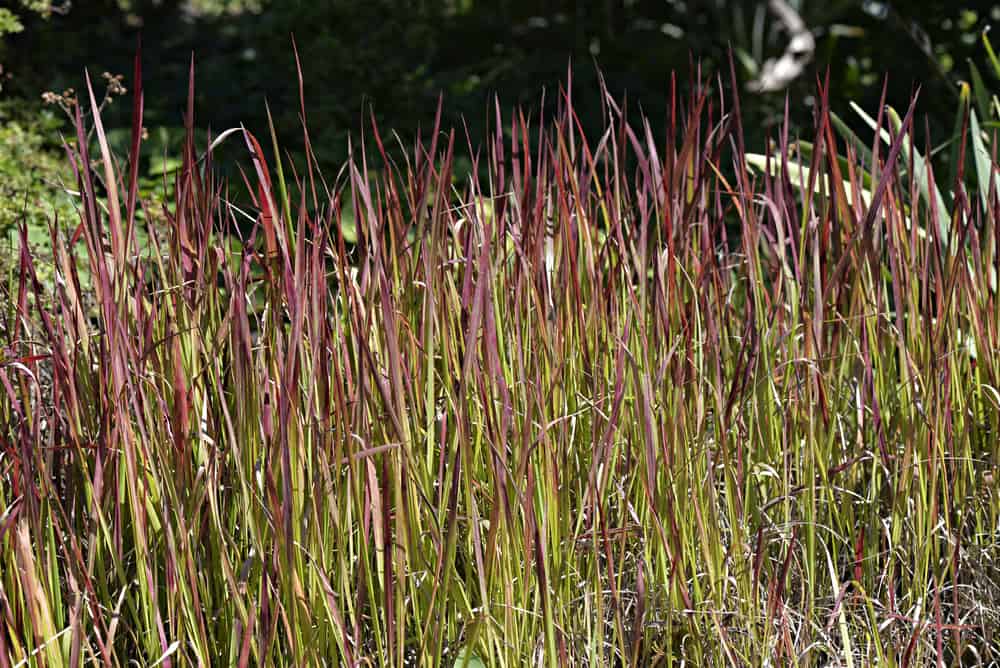
Japanese blood grass adds a completely different accent to gardens. Its deep red, yellow and green blades stand out, specifically in container gardens. It grows easily and thrives in a variety of conditions.
Japanese blood grass grows best in USDA zones 5-9, growing and spreading rapidly even in the hottest climates. This hardy perennial grows well in coastal regions, thriving in the high humidity they provide.
This grass isn’t too fussy about its soil either, tolerating troublesome sandy soils. It can handle periods of drought and live with a missed watering every so often.
Despite these benefits, gardeners should be careful about purchasing certain varieties. When I say they spread rapidly, I’m not kidding. In certain areas across the US, it’s considered a harmful weed and can’t be grown without a permit. Opt for the Rubra cultivar to be on the safe side.
8. Pink Muhly Grass
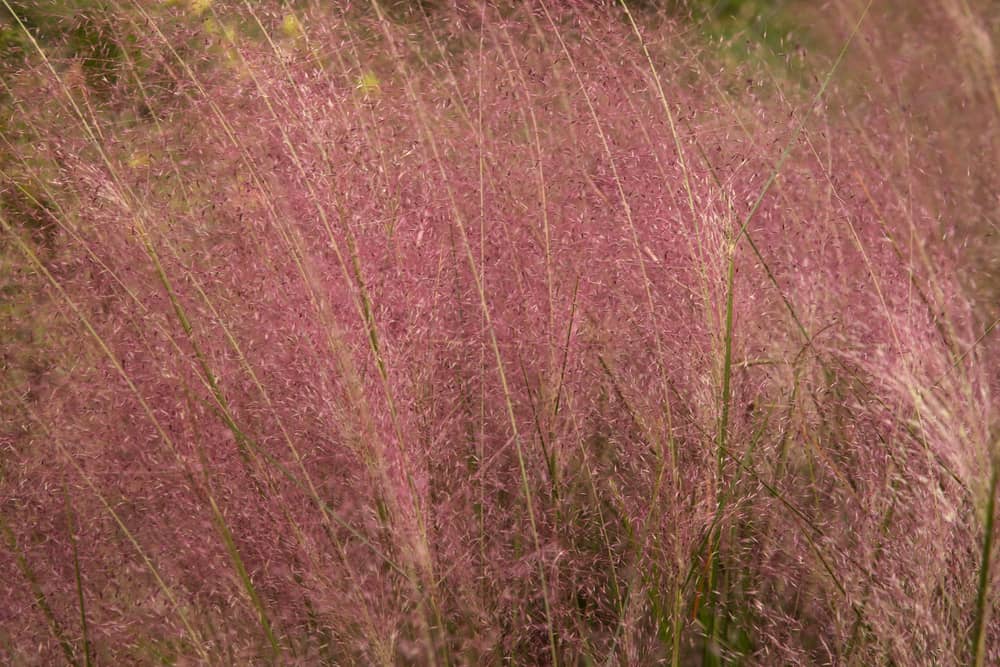
Pink muhly grass is one of the easiest ornamental grasses to care for. This taller plant grows to about three feet and makes an interesting display, especially near the end of summer. As the season draws to a close, the deep green leaves produce soft pink flowers that give off a fuzzy appearance. It’s like a send-off for summer.
This perennial grass loves the sun, needing six to eight hours of sunlight throughout the day. It can grow in part shade, but its beautiful pink flowers may not bloom.
Pink muhly grass needs dry and well-draining soil to truly flourish. This plant doesn’t need a lot of water and is drought tolerant once established. If you notice that the soil is extremely dry, especially closer to its roots, a quick watering will do just fine.
The easy-going nature of this plant doesn’t stop there. It thrives in most conditions, loving dry hot climates the most. The only things it cannot stand are extreme cold or excessively high humidity.
9. Japanese Silver Grass
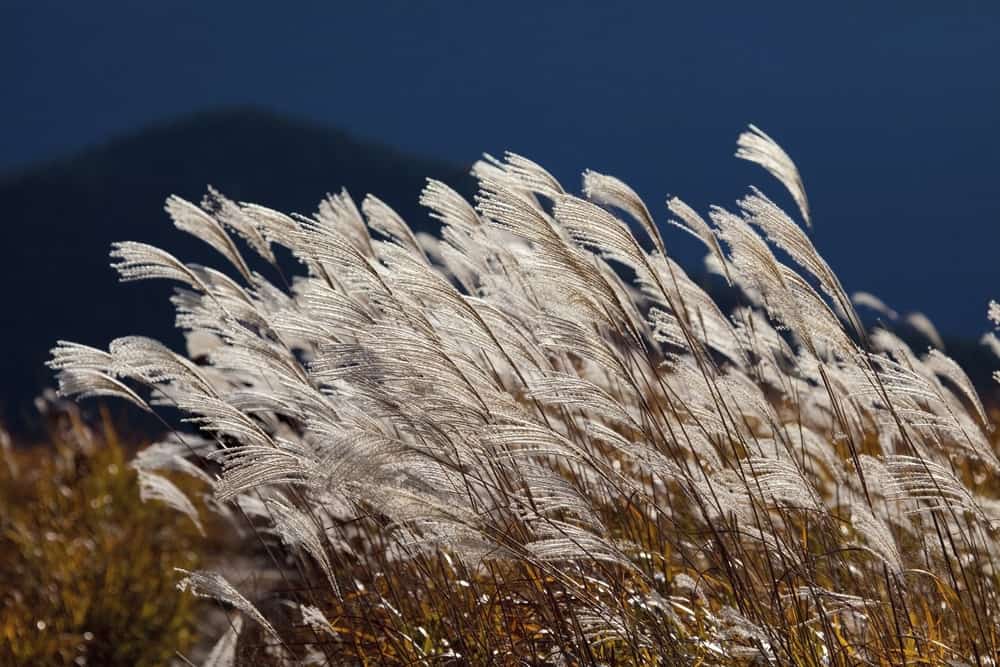
Another popular clump-forming grass is Japanese silver grass or Eulalia grass. Its soft feather-like seed heads create an elegant picture in any space. You may be without the feathered plumes throughout winter, but its upright stems are a spectacle on their own. Their height makes them perfect for screens and borders, but they will create a great focal point wherever they are planted.
Japanese silver grass thrives in zones 5-9, enjoying warmer regions and temperatures over cooler ones. It needs plenty of sunlight, but it does tolerate partial shade. If you want all that this grass has to offer, a sunny spot in your garden is best.
This ornamental grass isn’t too fussy about its soil, as long as it drains well. You’ll never go wrong with moist loamy soil. For a happy Japanese silver grass, you’ll want to water it regularly enough that the soil remains moist, but not too much that it becomes waterlogged – the rule of thumb for many garden plants.
10. Northern Sea Oats
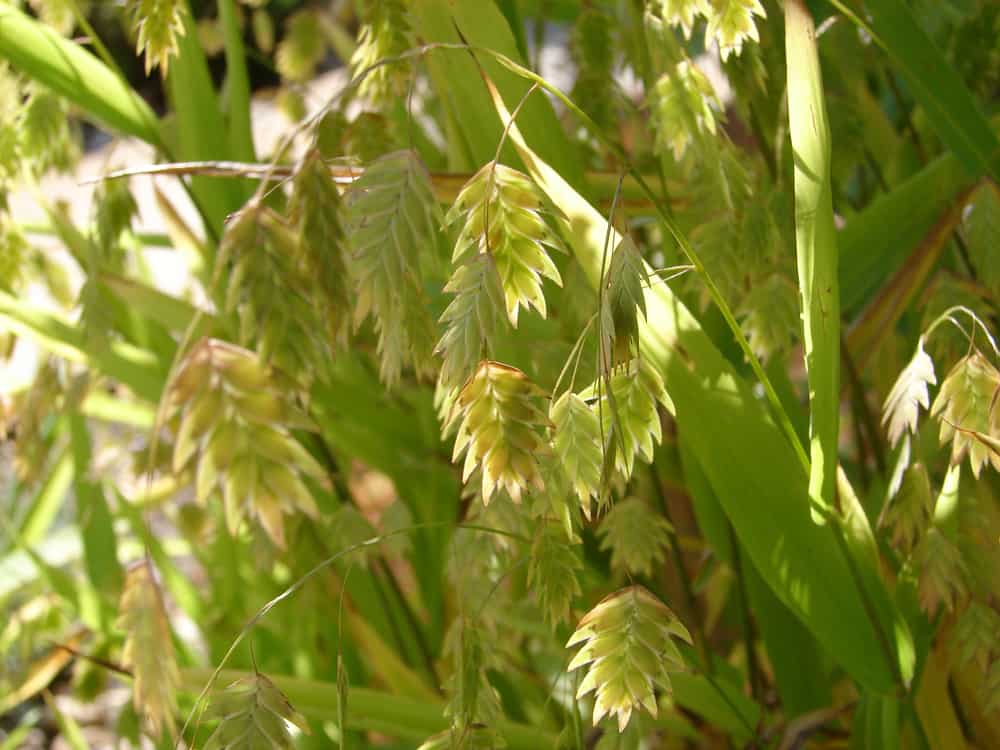
If you’ve been searching for an ornamental grass for your pond or water feature, look no further than northern sea oats. This grass has interesting flat, green seed heads that resemble wheat heads. Its deep green leaves are bamboo-like, creating interesting texture along the border of your pond.
Northern sea oats thrive in USDA zones 5-9, growing best in full sunlight. It’s not too particular about the soil you choose, so long as it’s rich in nutrients. Interestingly, northern sea oats tolerate both wet and dry conditions, making them a versatile grass for any situation.
If you grow northern sea oats as a land plant, you’ll need well-draining soil, with the same watering routine as the rest of your garden.
There really is an ornamental grass for whatever type of summer garden you may have. Whether you need a filler for your container garden or a short edging piece, ornamental grasses have got your back. Most are relatively easy to care for too. These ten grasses will survive the summer heat and continue to add variety to your garden year-round.
